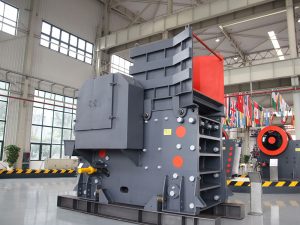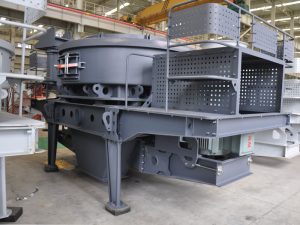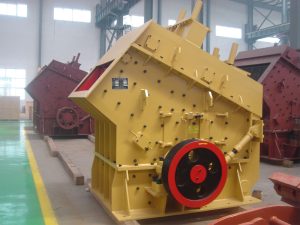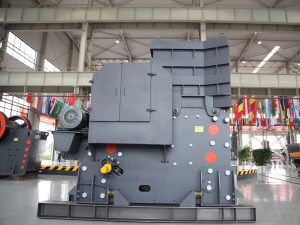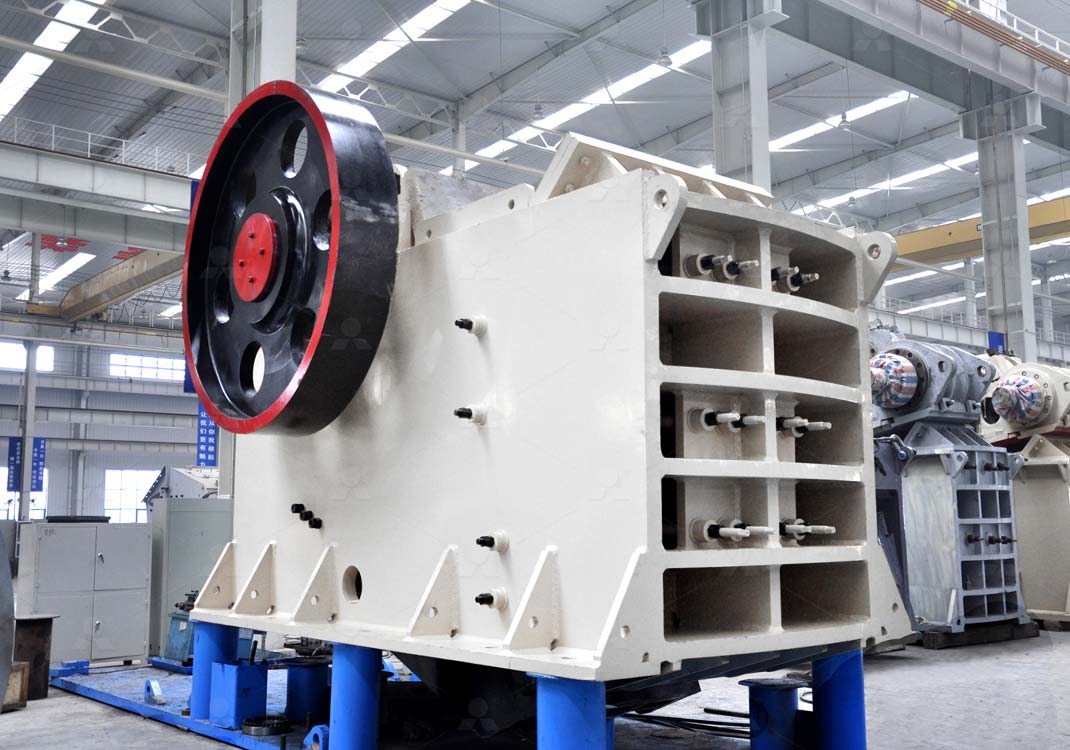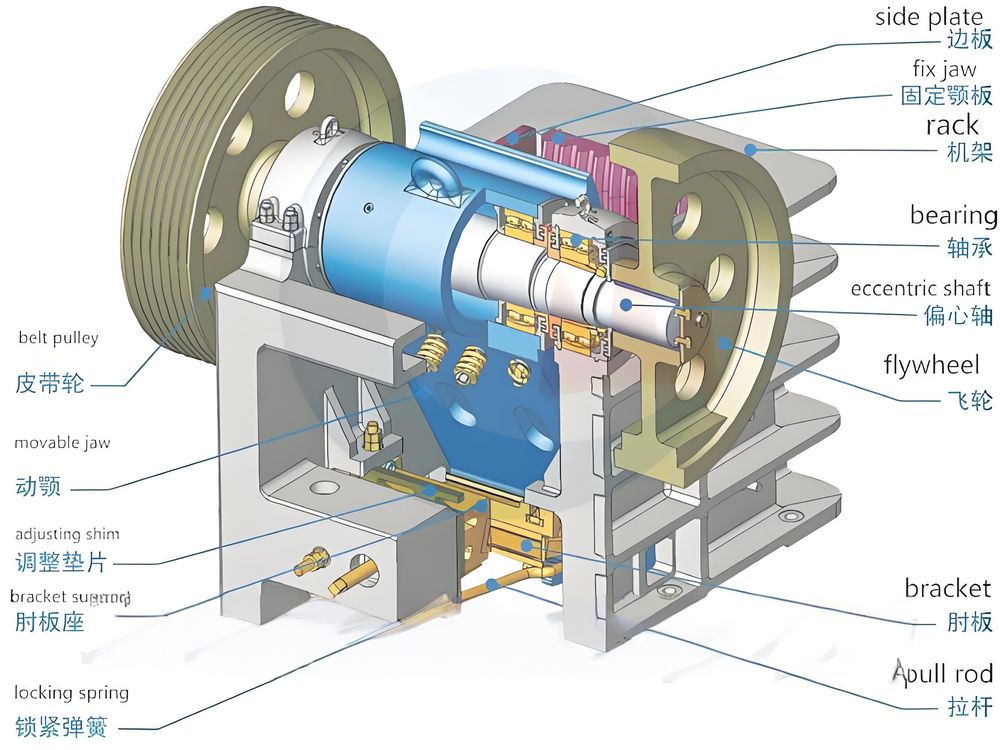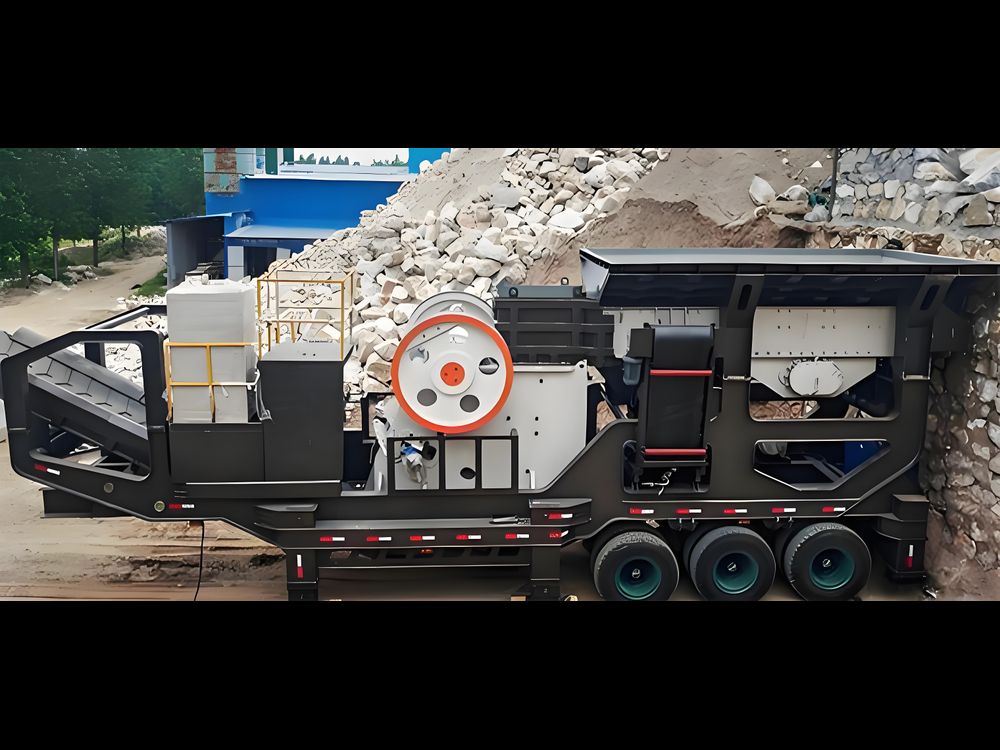Jaw crushers may encounter a variety of faults during use. The following is a detailed summary of its common faults and solutions:
1. Difficulty in starting
Fault manifestations: The motor cannot operate normally when the equipment starts, or the startup time is too long.
Cause: Unstable power supply voltage, poor line contact, motor or starter failure.
Solution:
Check whether the power supply voltage is stable and ensure good line contact.
Check the motor and starter. If there is a fault, repair or replace it in time.
Clean the foreign matter in the crushing chamber to ensure that there is no obstruction.
2. Increased noise
Fault manifestation: The noise of the equipment increases significantly during operation, accompanied by abnormal sounds.
Cause: Poor lubrication or wear of the bearing, loose or worn jaw plate or liner.
Solution:
Check and lubricate the bearing regularly, and replace it in time if it is worn.
Check the tightness of the jaw plate and liner, and tighten it in time if it is loose.
Check the frame bolts, and tighten them in time if they are loose.
3. Decreased output
Fault manifestation: The output of the equipment drops significantly when it is running, and the expected production target cannot be achieved.
Cause:
The raw material particle size is too large or the water content is too high.
The jaw plate or liner is seriously worn.
The crusher discharge port is too small or the feeding is uneven.
Solution:
Install pre-crushing equipment in front of the jaw crusher to pre-crush the raw stone to a suitable particle size.
Reduce the water content of the raw material and dry it.
Check the wear of the jaw plate and liner, and replace the seriously worn parts in time.
Adjust the size of the discharge port to ensure that the material can be discharged smoothly.
Adjust the feeding speed of the feeder to ensure uniform feeding.
4. Uneven discharge particle size
Fault manifestation: The discharge particle size is uneven when the equipment is running, which does not meet the production requirements.
Cause: Improper adjustment of the gap between the jaw plate or liner, and wear of the parts.
Solution:
Check the gap between the jaw plate and the liner, and adjust it as needed.
Check the wear of the jaw plate and liner, and replace the seriously worn parts in time.
5. Equipment overheating
Fault manifestation: The temperature of the equipment is too high during operation, accompanied by abnormally high temperature.
Cause: Insufficient or deteriorated lubricating oil, damaged bearings, and long-term overload operation of the crusher.
Solution:
Check the amount and quality of lubricating oil regularly, and replenish or replace it in time if it is insufficient or deteriorated.
Check the bearings and replace them in time if they are damaged.
Adjust the feed rate to avoid overloading the crusher.
6. Vibration intensification
Fault manifestation: The vibration of the equipment is significantly intensified during operation, accompanied by abnormal vibration.
Cause:
The foundation is unstable or the anchor bolts are loose.
The jaw plate or liner is loose or worn.
The bearing clearance is too large or damaged.
Solution:
Check the stability of the foundation and reinforce it in time if there is any problem.
Check the anchor bolts and tighten them in time if they are loose.
Check the tightness of the jaw plate and liner, and tighten them in time if they are loose.
Adjust the bearing clearance or replace the damaged bearing.
In addition, there are some other faults, such as broken toggle plate, slipping or breaking of belt, etc., which also need to be dealt with by corresponding solutions. In order to avoid the occurrence of these faults, the following preventive measures can also be taken:
Regular maintenance, including checking the lubrication system, tightening bolts, replacing worn parts, etc.
Strictly control the quality of raw materials to ensure that the particle size, hardness and shape of raw materials meet the requirements.
Rationally configure equipment and select suitable crushers and related auxiliary equipment according to production needs.
Train operators to make them familiar with the operating procedures and maintenance knowledge of the equipment.
Use high-quality wearing parts to extend the service life of the equipment.
In summary, for common faults of jaw crushers, it is necessary to discover them in time and take effective solutions to deal with them, and at the same time strengthen preventive measures to ensure the normal operation and production efficiency of the equipment.


